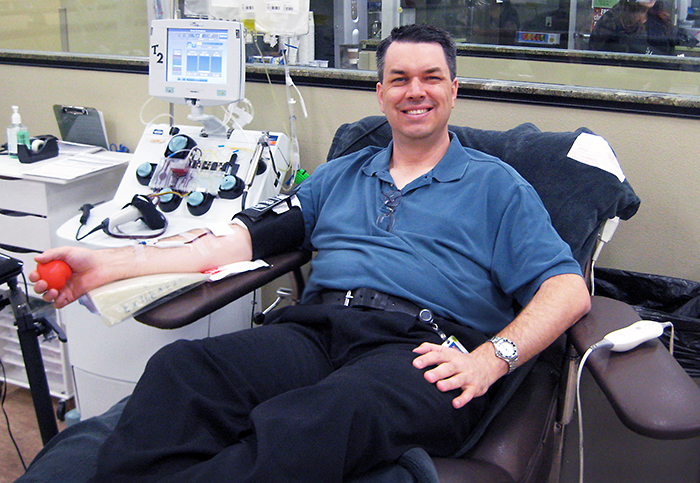Whether the transfusion is used for a heart surgery patient who requires as many as six units of blood or a trauma victim who may need up to 50 units of red blood cells, donating blood saves lives.
Every day local hospitals, including Loma Linda University Medical Center, depend on immediate, significant supplies of blood to treat their patients.
Next week, Loma Linda University Health is hosting blood drives at:
—Loma Linda University Health (Magan Hall): Tuesday, May 9 from 10 a.m. to 3 p.m.
—Loma Linda University Medical Center – Murrieta (hospital lobby): Wednesday, May 10 from 10 a.m. to 3:30 p.m.
Donors also receive a free cholesterol screening and are awarded Gift of Life Donor Loyalty points that may be redeemed at Lifestream’s online donor store. In addition, those aged 18 to 44 years may register for the Be The Match bone marrow screening at all donor locations.
Wesley “Tait” Stevens, chief of section for transfusion, and Salman Otoukesh, MD, hematology/medical oncology fellow, Loma Linda University Health, recently donated platelets at LifeStream’s San Bernardino donor center. Cancer treatments can reduce the number of platelets in the body; many such patients require regular platelet transfusions.
Platelets are the clotting agent in the blood and may be donated as frequently as once a week. However, individuals are limited to donating platelets 24 times per year – so LifeStream suggests platelet donors give bi-weekly to help ensure a steady supply for patients in need. It is important to increase the number of platelet donors as this blood component must be transfused within five days of collection.
According to Don Escalante, a public relations specialist for LifeStream, donors like Stevens and Otoukesh are making it possible to meet the demand for blood and platelets.
While all blood types and donation types are needed, “We always keep our eye specifically on the blood type O-negative and platelet supply,” says Escalante. “Type O-negative blood in particular is needed at all times because type-O red blood cells can be given to any patient.”
Do you know your blood type?
Donors receive a card four to six weeks after their first donation on which their blood type is listed. “From that point forward, the card serves as ID each time they give blood with LifeStream,” says Escalante, “and it also is valuable to have on their person in the event they need an emergency transfusion.”

